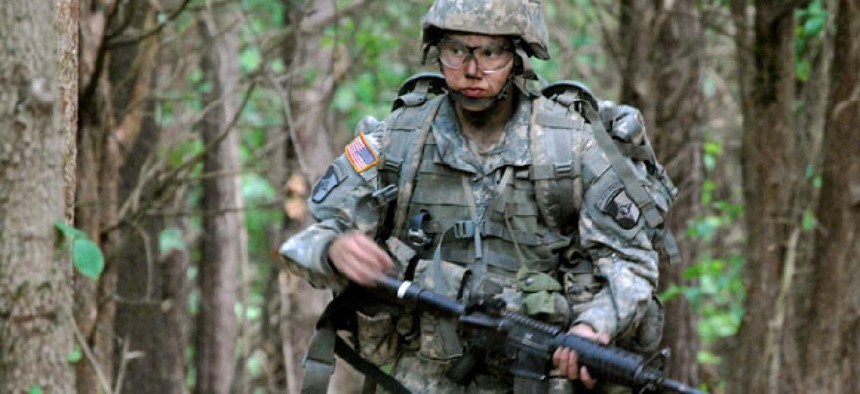
Kristin M. Hall/AP
VA seeks to improve treatment of women vets
A draft report says females suffer more from service-related issues than males and are less likely to access health care benefits.
Women veterans suffer more from service-related physical and mental health problems than male vets, and are less likely to seek health care benefits, according to a draft report from the Veterans Affairs Department.
Studies indicate that 31 percent of women vets have both medical and mental health conditions compared with 24 percent of male veterans, according to statistics included in a recent report from VA’s Women Veterans Task Force. The panel, created in July 2011, seeks feedback on its plan to fix gaps in the treatment and service of women veterans.
The most common diagnoses among women vets seeking care are post-traumatic stress disorder, hypertension, depression, high cholesterol, low back pain, gynecologic problems and diabetes. Women also are 30 percent less likely than men to enroll in VA’s health care benefits and are at greater risk for sexual assault while serving. In addition, they are more vulnerable to homelessness after they’ve left the military.
VA has increased its outreach to educate women vets about the services and benefits available to them and provided more training to department personnel in basic and advanced women’s health care, among other initiatives. But VA acknowledges it should do more. “Not all of our systems are equipped to address the comprehensive needs of women veterans or to provide certain services and benefits for which women veterans have a greater need relative to their male counterparts,” the draft report said.
Fourteen percent of active-duty personnel are women, while 18 percent of National Guard and Reserve forces are female. In 2011, about 1.8 million, or 8 percent, of the 22.2 million vets were women. That number is expected to increase to 2 million, or 10.7 percent, of the total by 2020. Women vets also are younger than their male counterparts: In 2010, the median age of female vets was 48 compared to 62 for male veterans.
The task force, which is accepting feedback on its strategy through June 14, identified four priorities for improving care of female vets: capacity and coordination of services; environment of care and experience; employment and training; and data collection and evaluation of services. The strategy aims to ensure VA has enough health care staff to serve women vets, improve coordination of services between the department and other community-based organizations, increase the use of benefits and services among women vets, and strengthen efforts to address the high rate of unemployment among the group.
VA also wants to tackle how women vets are treated “to reverse the enduring perception that a woman who comes to VA for services is not a veteran herself, but a male veteran’s wife, mother, or daughter,” the report said. “Women veterans often report feeling that their service in the military is not recognized or respected.”
NEXT STORY: This week's Al Qaeda no. 2 killed by U.S. drone







